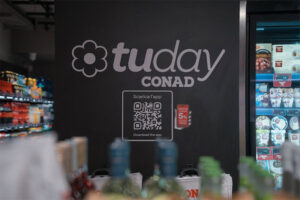Dunkin’ Donuts delivers digital signage customer experience
For Dunkin’ Donuts, it only has a short window in the day to reach its customers, as most come flooding in the morning to get their coffee or donut fix.
However, when customers do decide to come in later in the day, their needs can radically change. One time they may like hot coffee, the next they might be interested in a cold drink. Dramatic changes in the weather can also affect Dunkin’s business. For the QSR, static signage wasn’t enough, so they turned to digital.
During a session at Digital Signage Expo in Las Vegas this week, Ron Gazzola, senior vice president of visual display Samsung Electronics America, and Paul Murray, director of digital innovation from Dunkin’ Brands, discussed a pilot program where the company deployed a 46-inch OM display from Samsung at 10 locations to test its effects on customer experience.
The display was designed with heating and cooling in its enclosure to deal with various temperature swings. Samsung also provided more resilient glass to prevent vandalism. The display was designed with increased brightness to help handle various changes in visibility based on sunlight and the weather.
The main goal of this pilot was to test how Dunkin’ could improve its customer experience from its previous static
|
|
Murray also pointed out that digital signage presents unique opportunities for QSR to take advantage of the weather. For example, this year in some regions, we have experienced unseasonably warm weather during winter months. With digital signage, QSRs can adjust their menus to showcase cold drinks or vice versa during cold spring days.
Gazzola points out this is part of a broader trend of IoT, and how digital signage is a window into that world. As digital signage continues to become more interoperable with mobile devices and analytics, we will see a lot of excitement and growth in the industry.
Murray believes in the future, we will see even greater customization. The focus will be on helping customers “see what they want to see.” One example Murray gave would be if a customer could customize the digital menu boards they see when they go through the drive thru. Perhaps they could emphasize that they don’t want to see certain items such as soft drinks with high contents of sugar. This could be done a variety of ways, such as through mobile interoperability.
Murray also cautioned that some forms of these technologies may cause privacy concerns for customers, so companies will need to advance carefully.




